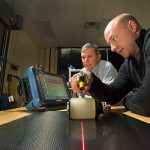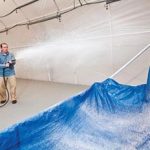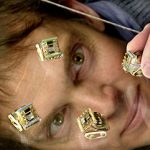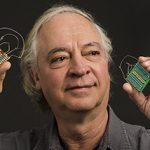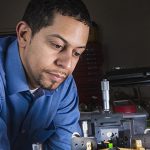Nondestructive Testing: Sandia looks inside composites
Sandia’s developing nondestructive ways to detect damage in composites, using traditional medical inspection techniques such as X-rays and sonograms and advanced methods including infrared imaging, ultrasonic spectroscopy and computed tomography.
